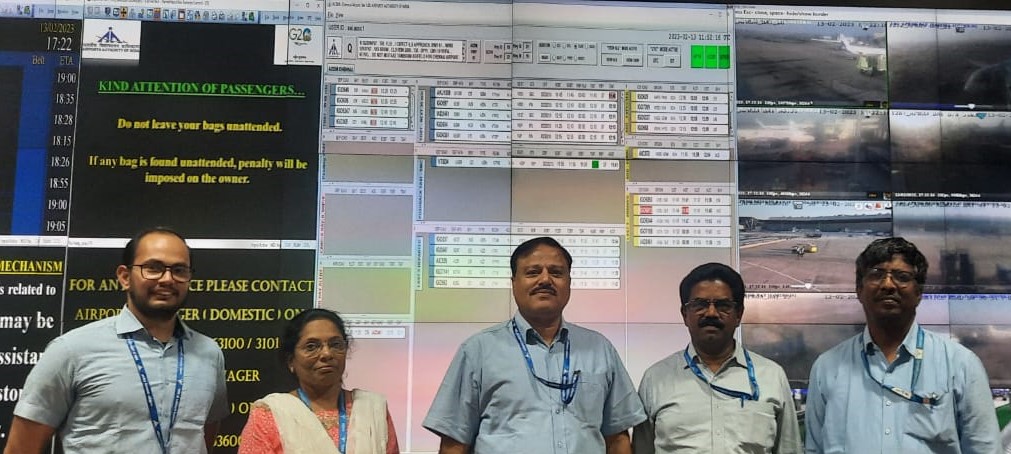Airport Collaborative Decision Making (A-CDM) to be implemented at Chennai Airport
Airports Authority of India and its airports have always been in the forefront in embracing futuristic technologies meant to enhance customer experience on all its verticals. The implementation of Airport Collaborative Decision Making (A-CDM) in Chennai Airport from 21.02.2023 will be another sure footed step toward achieving it. A-CDM is fundamental in making an end to end process interfacing the air terminal to the airspace to lessen delays and ultimately give a consistent and proficient travel experience to airline customers.
Airport Collaborative Decision Making (A-CDM) analyses the importance of the relationships between airport operators, air traffic controllers, airlines, and ground handlers working together to improve decision making, thereby reducing delays and enhancing efficiency. The focus of A-CDM is for all airport partners to share information, so that each organization has a more complete operational picture, enabling the effective and timely resolution of issues. Executed accurately, A-CDM can in times reduce operating cost attributed to fuel consume, which ought to add to environmental targets.
A-CDM results in reduction of congestion at holding point at the runway of an airport. It also helps reduce fuel consumption, carbon emission and taxi time of the aircraft. A-CDM**, the Common Information Sharing Platform is developed and introduced by AAI in-house team to process timely and accurate information for quick and precise decision making. A-CDM takes into consideration the ETAs of arriving aircraft, Target Off Block Times (TOBT) of departures, Runway-in-use and the handling capacity of the runway and determines the arrival and departure sequence. Based on the sequence and the parking position, it calculates the Target Take-Off Times (TTOT) & Target Start up Times (TSAT) of departures and Target In-Block Times (TIBT) for arrivals.
Implementation of ACDM helps air traffic control officers (ATCO) by reducing cognitive workload and resulting in safe and orderly flow of aircraft due to reduced number of simultaneous aircraft movements. Implementation of ACDM will result in considerable benefits to stakeholders are as follows:
• Reduction in airport and enrooted delays.
• Orderly flow of traffic- Increasing an efficient turnaround process.
• Reduction of delays to departures at holding point.
• Optimization of airport and airspace capacity
• Improved Situational Awareness and increased confidence amongst ACDM Partners.
• Better Passenger experience.
• Optimized use of parking stands, gates and terminals.
• Improvisation in GATE/Bay management.
• Reduction in Apron, Taxiway and Holding point congestion.
• Fuel Saving or reduction in CO2 emission.
• Improvisation in flight predictability.
With air traffic at Chennai expected to go up in coming months (35 movements/hr to 45 movement/hr) with mega capacity enhancement works underway, A-CDM will be pivotal in realising it. The Government of India’s Civil Aviation Policy also mentions the need of A-CDM implementation at all major Indian airports for promoting sustainable aviation by reducing congestion.
**Airports Authority of India took up first A-CDM project development for Mumbai Airport. All the project activities viz. software development, network design, hardware planning, live testing, implementation and software maintenance were completely done by an in-house team of Airports Authority of India (AAI). The implementation led to better coordination between all operational partners, improved ground handling processes, improved programmability due to increased stability for all operational processes (airlines, airport, Air Traffic Control) based on reliable target times.
***




